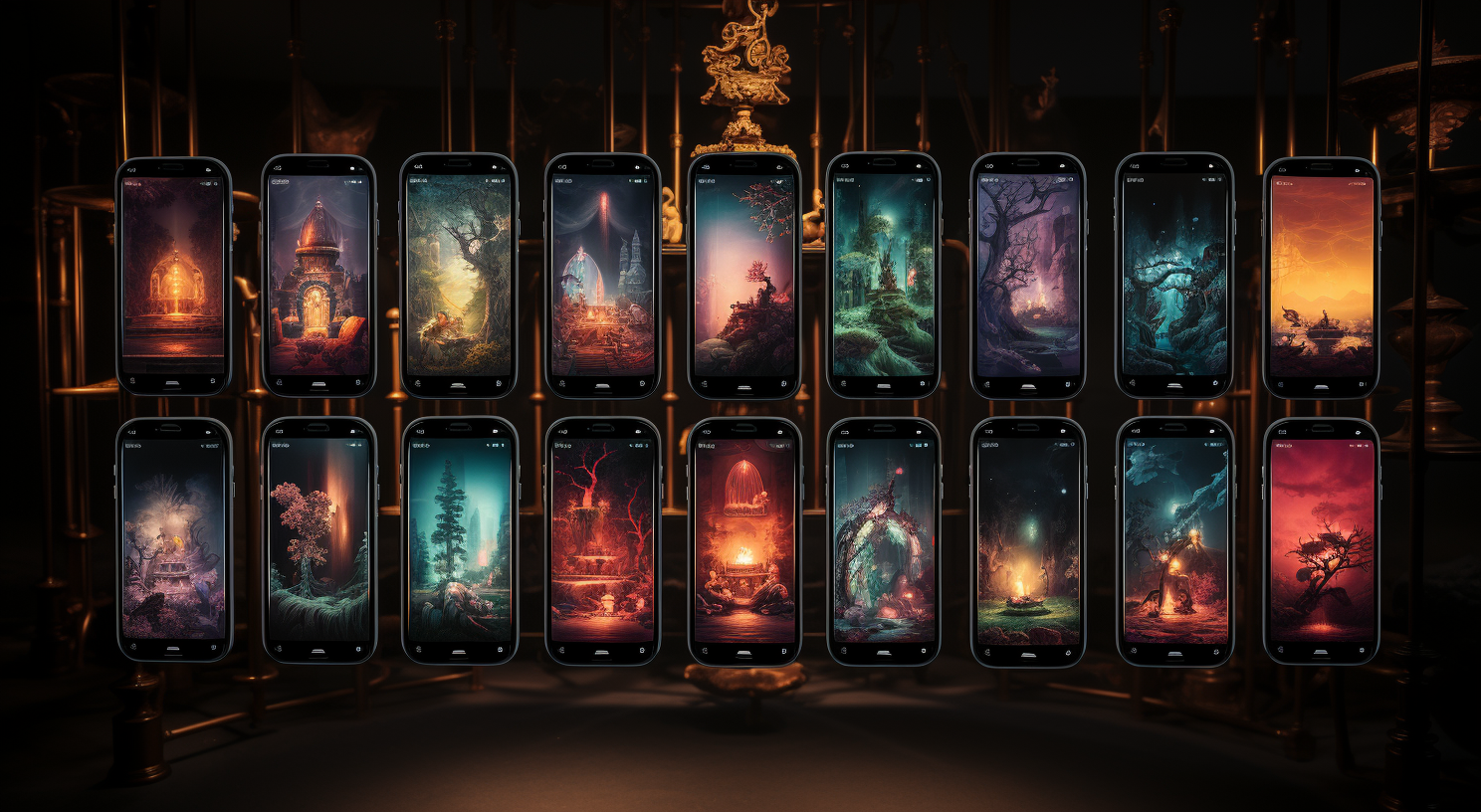DEFINITION:
An NFT (Non-Fungible Token) marketplace is a digital platform where NFTs are bought, sold, and sometimes created.
NFT Marketplaces have developed out of the need to buy, sell, and trade NFTs, which are unique digital assets that represent ownership or proof of authenticity of a wide range of intangible and tangible items, such as digital art, music, videos, in-game items, and more.
Each NFT has a unique identifier that distinguishes it from other tokens, making them non-fungible (i.e., not interchangeable).
Here are key features and aspects of an NFT marketplace:
- Trading Platform: It functions similarly to an online marketplace or auction house where users can list their NFTs for sale, purchase NFTs listed by others, and sometimes participate in auctions.
- Token Standards: NFTs are typically built on blockchain platforms like Ethereum, using standards such as ERC-721 or ERC-1155. These standards ensure that the NFTs are compatible with the broader ecosystem, including different marketplaces and wallets.
- Digital Ownership and Provenance: NFTs provide a blockchain-based proof of ownership, which is a key aspect of their value. This includes a record of the item's provenance, or history of ownership, which is permanently recorded on the blockchain.
- Creation and Minting: Some NFT marketplaces also offer tools for creating (or "minting") NFTs, allowing artists and creators to convert their digital creations into marketable NFTs directly on the platform.
- Variety of Assets: While digital art is a prominent category, NFT marketplaces also host a variety of other digital assets, including music, digital collectibles, virtual real estate, and more.
- Smart Contracts: Transactions on these marketplaces are governed by smart contracts, which are self-executing contracts with the terms of the agreement directly written into code. This automates and secures the process of buying, selling, and transferring NFTs.
- Royalties and Earnings: NFT marketplaces often allow creators to earn royalties automatically through smart contracts. This means creators can receive a percentage of sales whenever their NFT is resold in the marketplace.
- Wallet Integration: Users typically need to have a digital wallet compatible with the blockchain of the NFT. This wallet is used to store NFTs and to perform transactions such as buying, selling, and transferring tokens.
- Community and Social Aspects: Many NFT marketplaces also foster a community around the NFT ecosystem, featuring social elements like forums, social media integration, and tools for showcasing collections.
NFT marketplaces are a critical part of the NFT ecosystem, providing a platform for the creation, sale, purchase, and exchange of these unique digital assets.
NFT marketplaces play a significant role in the emerging digital economy, bridging the gap between traditional art and digital innovation.

The Most Popular NFT Marketplaces
Several NFT marketplaces have risen to prominence, each offering unique features and catering to different aspects of the NFT ecosystem.
Here are some of the most popular NFT marketplaces:
- OpenSea: Widely regarded as the largest and most versatile NFT marketplace, OpenSea offers a vast array of NFTs, including art, domain names, virtual worlds, trading cards, and more. It supports multiple blockchain platforms like Ethereum, Polygon, and Klaytn.
- Rarible: Rarible is a decentralized NFT marketplace that allows artists and creators to issue and sell NFTs. It operates on the Ethereum, Flow, and Tezos blockchains and emphasizes community governance, allowing token holders to participate in decision-making processes.
- Foundation: This platform is known for its focus on digital art and has become a favorite among artists and collectors for its curated approach. Foundation operates as a community-run marketplace, where creators need an invitation from fellow artists to post their work.
- SuperRare: SuperRare has a strong emphasis on single-edition digital artworks. It's known for its high-quality, curated selection, making it a destination for serious collectors and professional digital artists.
- Nifty Gateway: Owned by Gemini, Nifty Gateway hosts "Nifty drops" (limited edition digital assets). It's known for featuring high-profile artists and celebrities and for enabling purchases using fiat currency, which is a unique aspect compared to other platforms.
- Zora: A decentralized marketplace focusing on a range of NFTs, including art, music, and domain names. Zora has been notable for its innovative approach to NFT pricing and ownership dynamics.
- Magic Eden: Popular in the Solana ecosystem, Magic Eden offers a wide variety of NFTs, including gaming items and digital art, and is known for its user-friendly interface and low transaction fees.
- LooksRare: LooksRare is a community-driven marketplace that has gained attention for rewarding its users with its native token for buying, selling, and trading on the platform. It's been notable for its aggressive strategies to attract users from other platforms.
- Axie Marketplace: The official marketplace for Axie Infinity, a popular blockchain-based game. It's primarily used for trading Axies (in-game creatures), land plots, and other in-game assets.
- Mintable: Supported by Mark Cuban, Mintable is known for its ease of use in minting, buying, and selling NFTs. It offers a range of digital assets and operates on the Ethereum blockchain.
These marketplaces have contributed to the diversity and growth of the NFT space, each offering unique features, focusing on different types of assets, and catering to various segments of the NFT community. The popularity and usage of these platforms continue to evolve with the rapidly changing landscape of digital assets and blockchain technology.

The History of NFT Marketplaces
The history of NFT (Non-Fungible Token) marketplaces is intertwined with the development and popularization of NFTs themselves.
Here's an overview of how NFT marketplaces evolved:
- Early Beginnings (Before 2017): Before NFTs gained mainstream attention, there were already digital collectibles and virtual goods being traded online, particularly in gaming communities. However, these items were usually confined within specific games or platforms and lacked the interoperability and uniqueness offered by blockchain technology.
- Emergence of NFTs (2017): The concept of NFTs started to take shape with projects like CryptoPunks and CryptoKitties. CryptoPunks offered 10,000 uniquely generated characters, while CryptoKitties, launched in November 2017, allowed players to buy, collect, breed, and sell virtual cats. CryptoKitties became particularly popular, causing significant congestion on the Ethereum network and bringing attention to the potential of NFTs.
- Development of Dedicated Marketplaces: Following the success of early NFT projects, dedicated NFT marketplaces began to emerge. These platforms were designed specifically for the buying, selling, and trading of NFTs. OpenSea, founded in 2017, is one of the earliest and now largest of these marketplaces, offering a wide variety of NFTs across different categories.
- Mainstream Attention (2020-2021): The NFT market exploded in popularity in 2020 and 2021. High-profile sales, like Beeple’s digital artwork selling for $69 million at Christie’s, caught the public’s attention. This period saw a significant increase in the number and variety of NFTs being traded, from digital art and music to virtual real estate and beyond.
- Diversification of Platforms: With the growing interest in NFTs, new marketplaces started to appear, each offering unique features. Some focused on specific niches like art (e.g., Foundation, SuperRare), while others explored different blockchain technologies beyond Ethereum to address issues like high transaction costs and environmental concerns.
- Integration with Traditional Art and Entertainment: Established art auction houses like Christie’s and Sotheby’s began hosting NFT sales, signaling a merging of traditional and digital art worlds. Additionally, celebrities, musicians, and brands started to engage with NFTs, further propelling their popularity.
- Innovations and Challenges: NFT marketplaces continued to innovate with features like social media integration, advanced royalty structures for creators, and enhanced user experiences. However, they also faced challenges such as scalability, environmental concerns due to the energy consumption of blockchain networks, and issues around copyright and intellectual property.
- Looking to the Future: As of 2023, NFT marketplaces are exploring further integration with emerging technologies like metaverses and Web3, signaling a continued evolution of the digital asset space. They are also addressing challenges such as user accessibility, environmental impact, and regulatory compliance.
The history of NFT marketplaces reflects the rapid evolution of digital assets and blockchain technology, highlighting both the vast potential and the challenges of this new digital frontier.
As the technology matures and becomes more integrated into various aspects of digital and physical life, NFT marketplaces are likely to evolve further, offering new opportunities and experiences for creators and collectors alike.
You May Also Like:


